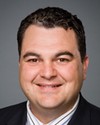I can say that certainly at the federal level we don't like writing blank cheques. We like making one-time capital commitments and then getting out so that we can write another budget that will make further commitments down the road.
To me, that's something this committee has to explore, which is the opportunity for high-speed rail to be a P3 operation in Canada, integrated with other businesses, so that operators of buses and airlines can in fact integrate this and it becomes a very significant economic engine. Obviously, the benefit of high-speed rail over air is that it can stop in communities where airplanes just cannot feasibly or economically stop.
To the airlines, I have a couple of questions. You mentioned that you have a user-pay model. I actually think there's nothing wrong with a user-pay model as long as it's fair.
With respect to Mr. Maloway's comments, Pearson Airport is the most significant economic driver in the city of Toronto and the entire GTA. It is the largest single economic driver in the province of Ontario. To what extent are you contributing to Pearson through your operations at Air Canada? How much economic activity is Air Canada bringing in and taking out of Pearson? Do you have any idea?

